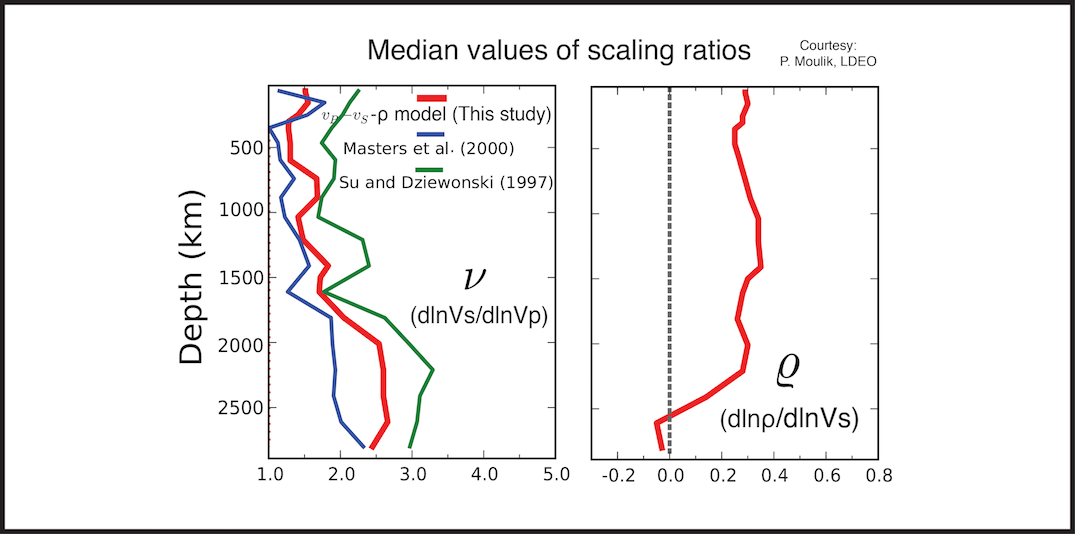Joint vP-vS-ρ model: Thermo-chemical structure
The relationship between large scale variations in anisotropic shear velocity, density and compressional velocity in the Earth’s mantle
Is there a chemically distinct reservoir in the Earth?
Do superplumes overly denser-than-average material?
Can we detect these anomalies with seismic data?
Can we evaluate statistical significance of the features in tomography?
This study presents the strongest evidence till date (ca. 2015) of large-scale thermo-chemical heterogeneities in the lowermost mantle using the full spectrum of seismic data. A large data set of surface-wave phase anomalies, body-wave travel times, normal-mode splitting functions and long-period waveforms is used to investigate the scaling between shear velocity, density and compressional velocity in the Earth's mantle (ϱ=dln ρ/dln vS, ν=dln vS/dln vP). Our preferred joint model consists of denser-than-average anomalies (∼1% peak-to-peak) at the base of the mantle roughly coincident with the low-velocity superplumes. The relative variation of shear velocity, density and compressional velocity in our study disfavors a purely thermal contribution to heterogeneity in the lowermost mantle, with implications for the long-term stability and evolution of superplumes.
Summary:
[I] New methodology to construct joint models with various levels of scaling complexity in order to detect seismological signatures of chemical heterogeneity
[II] The datasets considered cannot be fit concurrently with a uniform ν or a positive and uniform ϱ throughout the mantle (S362ANI+M was constructed assuming a uniform ν).
[III] Several features persist after the inclusion of new and larger data sets: anti-correlation between bulk-sound and shear velocities in the lowermost mantle as well as an increase in ν in the lower mantle.
[IV] Recent measurements 0S2 splitting, in particular, are largely incompatible with perfectly correlated vS-ρ structure.
[IV] A way to significantly improve the fits to various data sets is by allowing independent density perturbations in the lowermost mantle.
Reference:
Please cite the following work if you use this data or software.
[A]Moulik, P. & Ekström, G., 2016. The relationships between large-scale variations in shear velocity, density and compressional velocity in the Earth's mantle, J. Geophys. Res., 121, doi: 10.1002/2015JB012679. pdf
You can also cite the dataset and software from this Zenodo page (Optional).
[B] Moulik, P. & Ekström, G., 2016. Dataset and Software for The Relationships Between Large-scale Variations in Shear Velocity, Density, and Compressional Velocity in the Earth's Mantle. In J. Geophys. Res. Solid Earth (v1.0, Vol. 121, pp. 2737–2771). Zenodo. doi: 10.5281/zenodo.8356540




